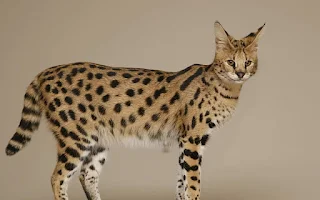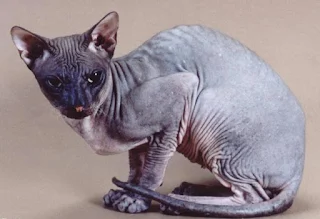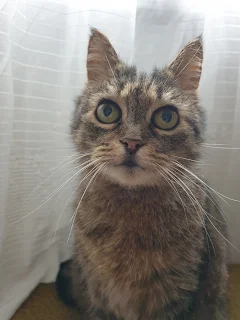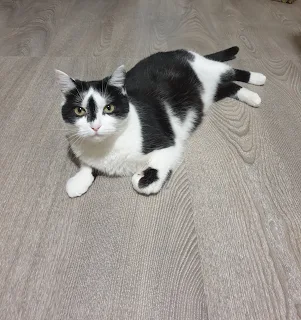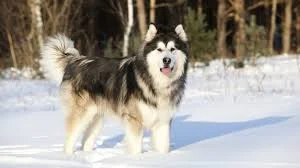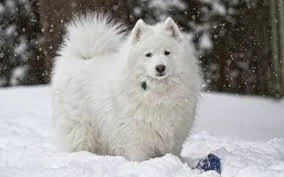The scratcher should initially be placed in the place where the cat was already scratching. Later, gradually, the scraper can be moved from one end of the room to the other, or you can get more scrapers.
Tuesday, December 13, 2022
WHY DO CATS SCRATCH?
Tuesday, December 6, 2022
Top 5 Most Expensive Cats In The World
Written By Xena
3. SAVANNAH CAT ($ 22,000)
4. SPHYNX CAT ($ 3,000)
5. PETERBALD CAT ($ 3,000)
If you are wondering which of these MOST EXPENSIVE BREEDS of cats is also the MOST AGGRESSIVE? There are no rules. It is true that some cats are a little harder to tame than others (SAVANNAH, BENGAL, AFRICAN SERVAL, SPHYNX).
But they are neither lions, nor jaguars, nor tigers, and they need discipline, proper care, attention, and affection. And with the right education, you can turn a tiger into your "hairy friend".
I'll be writing about MOST
AGGRESSIVE CATS in the next sequel of my BLOG about cats and dogs. In the
meantime, for more information about cats and dogs, visit my
https://www.youtube.com/channel/UCLBiSeK99poMzDuuyvzDUXg
"We have to take care of our pets as for ourselves."
VERY SMALL DOGS (up to 4 kg )
VERY SMALL DOGS are one of a total of 5
groups that make up BREEDS OF DOGS. This group consists of all dogs up to 4 kg.
ENJOY THE VIDEO !!!
LARGE DOGS PART IV
68.
SLOVAK CUVAC
69.
SPANISH GREYHOUND
70.
SPANISH POINTER
71.
OLD DANISH POINTER
72.
OLD ENGLISH SHEEPDOG
73.
SWEDISH ELKHOUND
74.
WHITE SWISS SHEPHERD DOG
75.
BRACCO ITALIANO
76.
SPINONE ITALIANO (ITALIAN SPINONE DOG)
77.
URUGUAYAN CIMARRON
78.
WEIMARANER
79.
GREAT ANGLO-FRANCAIS WHITE AND BLACK HOUND
80.
GREAT ANGLO-FRANCAIS WHITE AND ORANGE HOUND
81.
GREAT ANGLO-FRANCAIS TRICOLOR HOUND
82.
LARGE MUNSTERLANDER
83.
GRAND BLEU DE GASCOGNE
84.
GIANT SCHNAUZER
85.
GREATER SWISS MOUNTAIN DOG
86.
GRAND GRIFFON VENDEEN
87.
OTTERHOUND
88.
GOLDEN RETRIEVER
CATS THOSE WONDERFUL, MYSTIC CREATURES
WRITTEN BY XENA
However, history has not always caressed
these wonderful creatures.
Thus, for example, in the Middle Ages some
religions, including the Christian one, persecuted and killed CATS. Even during
the Renaissance, they were burned at the stake because they were associated
with witches and evil forces. It was a "dark age" for CATS. But over
time (early 17th century) such worldviews were abandoned, as CATS proved to be
indispensable in the fight against rodents, which transmitted the plague, and
which ravaged Europe. Thus, CATS became an important factor in human life and
part of the living community, and at the end of the 19th century, the first CAT exhibitions were opened. CATS make us happy and relaxed, but sometimes they also
make us sad. They give us the harmony of life, and "time spent with CATS is never wasted" - Sigmund Freud would say.
Then why do most people resort to DOGS as PETS? The answer to that question, I don’t know, but I can give you good
reasons why you’ll want to have a CAT.
CATS can be said to be intelligent creatures because they have a great ability to remember and learn. This is evidenced by the fact that they quickly discover how to get people to do exactly what they want - for example, they respond to their name when it's time for a meal. The memory serves them some useful information, such as the most comfortable place to sleep, favorite food or toy, and the place where their water bowl or their toilet is located.
The best reason to keep a CAT as a PET is
that it does not require much care. Namely, as they are very independent, they
only need a little of your attention in the form of a daily dose of cuddling
and playing, and providing basic living needs to be happy. They will also fill
you with happiness.
Maybe by reading this text, you are one step closer to getting your CAT. If so, then my advice is, “ADOPT, DO NOT BUY!” This will make you do a good deed and you will be more spiritually fulfilled, and that is then a good prerequisite for healthy living in general.
"We take care of our pets as for ourselves."
WHAT ARE THE MAIN DIFFERENCES BETWEEN ALASKAN MALAMUTE AND SAMOYED DOG?
WHERE DID SIBERIAN HUSKY COME FROM?
The SIBERIAN HUSKY breed was first mentioned by the CHUKCHI people, who are an autochthonous people inhabiting the CHUKCHI Peninsula, the shores of the CHUKCHI and BERING SEAS, and the Arctic Ocean within the former USSR (Siberia).










